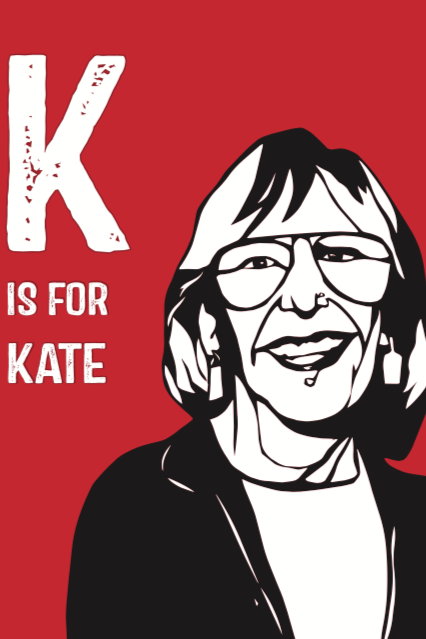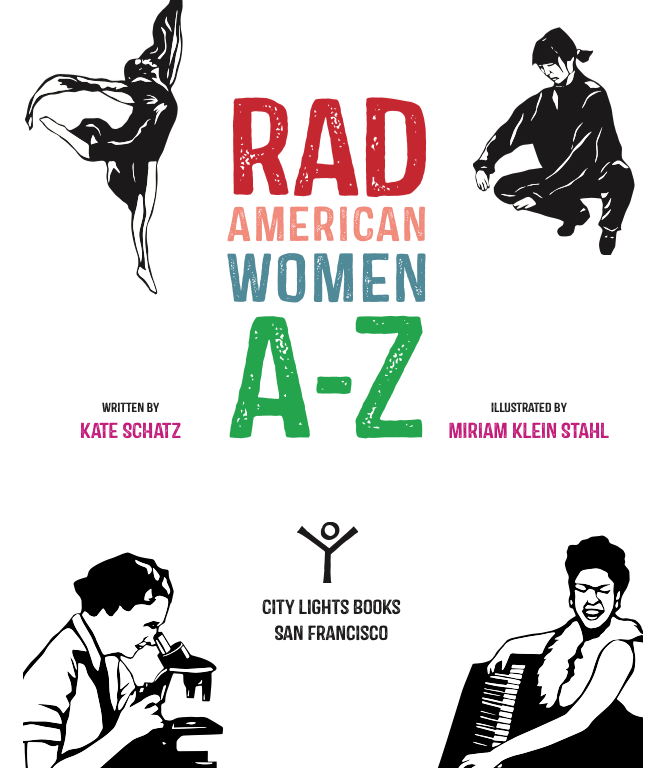

Think about all the talented, brave, and brilliant women who have colored American history. Now imagine, after two years of researching all of these amazing women, you have to pick 26 — and only 26 — of their stories to tell. Good luck!
For author Kate Schatz, simply choosing was the hardest part about writing Rad American Women A-Z. "There were like 26 million women to choose from!" Schatz told BuzzFeed during a recent emailed interview. The new children's book available for purchase online now from City Lights/Sister Spit profiles "rebels, trailblazers and visionaries" from widely celebrated icons to those whose names all too often go unspoken. The less predictable additions include Maya Lin, the artist responsible for the Vietnam Veterans Memorial, and Mexican-American journalist Jovita Idar. The book's subjects are as diverse in race, socioeconomic class, and historical era as they are in passion and profession, all the way from "A is for Angela" Davis to "Z is for Zora" Neale Hurston.
Schatz, who grew up in San Jose, California, and now lives on the tiny island of Alameda in the Bay Area, originally set out to write Rad American Women for her daughter, "so that she'd have a fun, empowering, and informative book to read." Having previously published numerous short stories in places like Oxford American and Joyland, this was Schatz's first foray into the world of kid's lit. "Writing for children is different in every way imaginable, especially on the publishing end — people are so so so psyched for children's books," she says. "It's also a huge pleasure and privilege to write something that will actively educate readers — I'm a teacher, too, so that's always part of my mission as an artist."


Rad American Women's approach to active education pairs Schatz's one-page bios with illustrator Miriam Klein Stahl's bright and bold cutout portraits. LGBT innovators highlighted include "B is for Billie Jean" King, a tennis world champion and one of the first professional athletes to come out as gay, and "K is for Kate" Bornstein, the transgender author, performer, and activist. Schatz, who identifies as queer and is married to a man, spoke passionately about recognizing the "intersection of histories."
"History books and classes need to move beyond the Chapter on Women's Rights and the part on the syllabus where you learn about Gay Stuff," she argues emphatically. "I hope in the future that we'll expand our historical lexicon beyond the familiar faces, names, and events — there's so much more to queer history than Stonewall and AIDS, so much more to women's history than Seneca Falls, Susan B. Anthony, and the Feminine Mystique. These are all important, but there's so. Much. More."
Queer history isn't necessarily the stuff of today's elementary school lessons. When asked what she would tell parents who worry that the United States' anti-gay, racist, and otherwise unpleasant past is too dark and inappropriate for young children, Schatz says she gets it. "You want nothing more than to protect and preserve your child's magical innocence. But that shouldn't stop you. The truth is that we do our children — and our society — an absolute disservice when we ignore the realities of the world we try to 'protect' our kids from. I think this is especially important for people who live in areas that aren't diverse, where kids aren't exposed to people of different colors, classes, abilities, and orientations. Kids can handle so much more than we think they can, and none of them are born biased. It's all learned, so why not be proactive, and teach tolerance and truth from an early age?"

In terms of exposure, children aren't necessarily used to considering the complications of gender identity — a subject that plenty of adults still can't wrap their heads around. This isn't just about a learning curve, though; Schatz's history book exists in a culture in which a lack of understanding fuels a culture of violence toward transgender people. 2015 has already seen a disturbing spike in attacks against transgender women of color in particular. Keeping this climate in mind, Schatz approached her section on transgender activist Kate Bornstein with delicacy. "I explained the difference between sex and gender, and defined being transgender as not identifying with the sex you're assigned at birth," she says. "I didn't talk about how this is controversial, or a really big deal — I just state it as fact, and there it is."
Schatz was also sure to write all the women as strong and bold and confident — which, she points out, is not always the case with representations of women of color in particular, like in the case of "Rosa Parks, the tired little lady on the bus, instead of Rosa Parks, the NAACP secretary and experienced organizer."
Rad American Women champions a couple dozen grassroots organizers, musicians, athletes, and abolitionists who changed the nation — but Schatz doesn't intend to stop there. "Miriam and I intend to make this a series, and have a few ideas about the next book. Rad Women Worldwide? Rad Historical Events? Rad Women in Science? So many options…"
In terms of this first installment of Rad Women, Schatz's goals are perfectly modest. Her hopes: "Basically that it gets translated into every language in the world and everyone reads it and the patriarchy dissolves and along with it goes institutionalized racism and war and money and we live in matriarchal symbiosis with the earth.
"I'm only kind of kidding."
